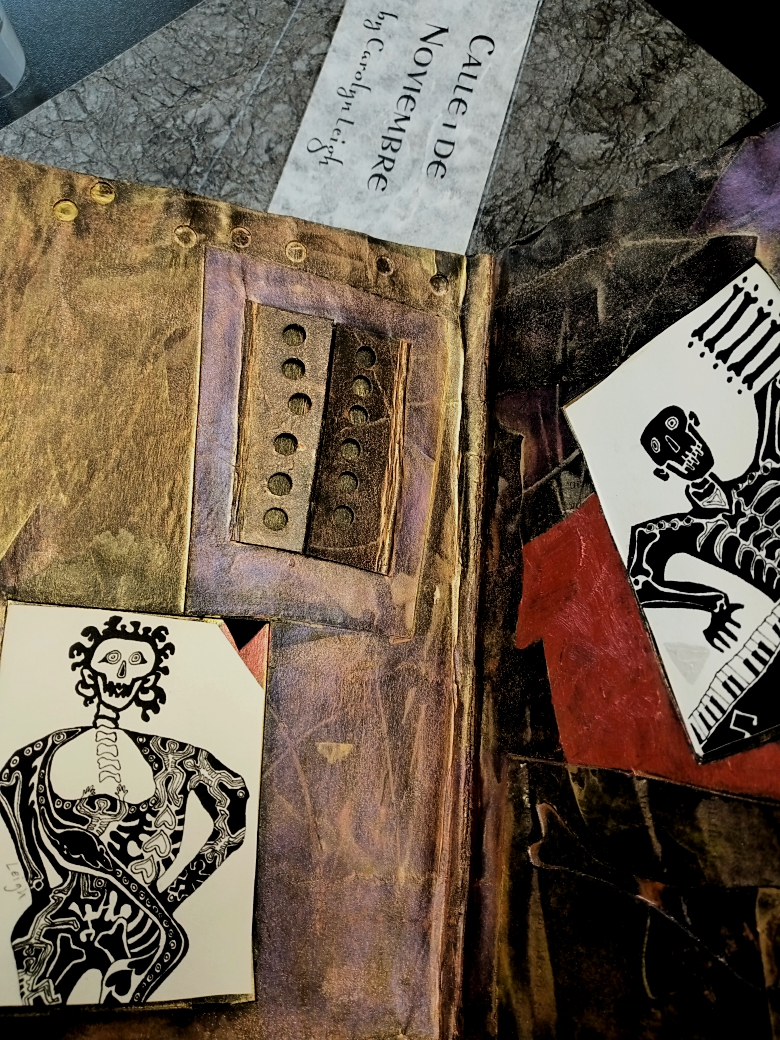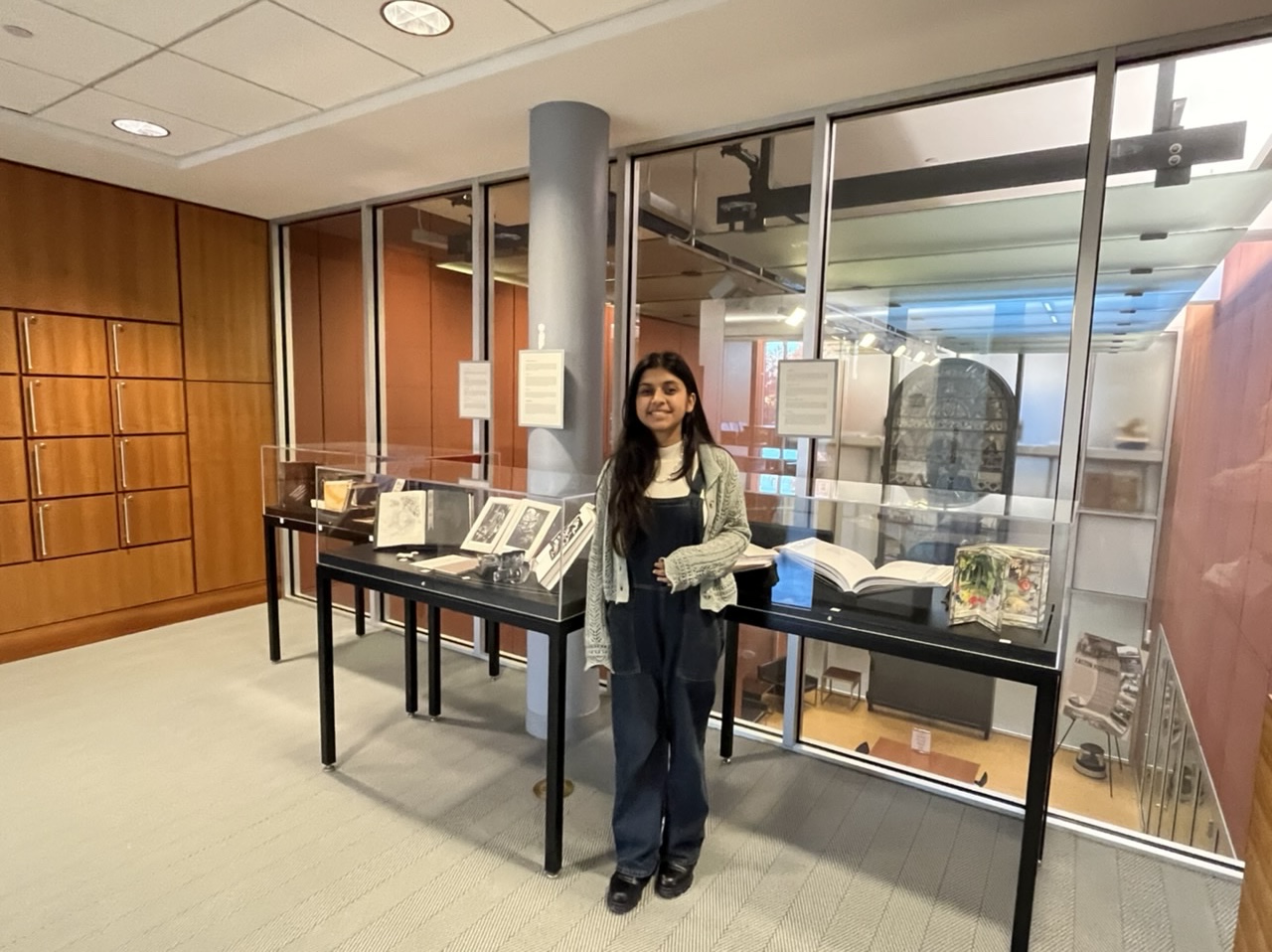New student-curated exhibit in Special Collections

Lafayette Libraries’ Special Collections & Archives is currently displaying a student-curated exhibit in the Special Collections Reading Room. Through engagement with unique archival and rare printed material, and in consultation with Special Collections & Archives staff, students are able to learn more about how to select and display items, write exhibit labels and text, and publicize their exhibits throughout the school year.
The fall exhibit features artists’ books selected by Kusum Subedi ‘26, a first year engineering student from Nepal.
Death in Disguise, on view in November and December, presents a collection of books that highlight the cultural, literary, psychological, and social significance of death in artistic and poetic form. “Death is a real phenomena, but the imagination of humans to portray and narrate it in a very romanticized way is what stands out to me. There is something about the power of storytelling which makes us accept the suffering that death brings to us.” she writes.

The exhibit includes a diverse range of materials from different cultures and spans centuries to explore multiple ways in which death has been communicated and understood. “I was really intrigued by how death was portrayed in Greek mythology, and especially how ‘gods’ stepped out of their perfectionist character which propelled them to the bottomless well of death and suffering. For example, Orpheus’s one look from his shoulder caused him to lose the love of his life forever in the underworld and Demeter’s intense mourning for the death of her daughter and resigning from her godly responsibilities plunged the world into catastrophic famine.” These themes are the basis for artistic and poetic books now on display. They are paired with silkscreen illustrations based on ancient Mayan patterns. “The Incantations of Mayan Women, which consists of spells and songs given to the Mesoamerican people by their First fathers mothers, signifies how the narrative of death is passed down to generations. The main intent behind selecting items was to create as diverse a collection of books as possible with ample space for the audience to build their own interpretation about death from the amalgam of items displayed.”

Planning an exhibit requires close research of material including the context of their creation, and the intent of the authors and creators. The college’s Special Collections holds thousands of items including artist books, which may seem simple at first glance, but often require patience and empathy to understand. “There are artist books without many words written in them, such as Calle De 1 Noviembre, Persephone, and Nightfall Faces, but the illustrations and design speak, and they speak different languages to different beings, completely open to one’s own interpretation. There is a miniature book; Eclectic Abecedarium which presents common nuances of daily life. There are psychological thrillers such as Dracula, The Masque, and Tell-Tale Heart, which explore fear as a significant emotion associated with death.”
Students are encouraged to visit the exhibit to learn more about the items on display. “ I think students should know that they can reach out to the collection in case of any curiosity about any rare books, or any queries about Lafayette College’s history in general, or any historical curiosity in general. Special collections is all about highlighting the books that carry remarkable value. The special collection also has resources, and is in the evolutionary process to create more resources to preserve the rare, old, and fragile resources. As of now, I’m expecting that more diverse books, manuscripts, and archives from around the world will be incorporated in the collections.”